Why Organic Makeup Brands Are Leading the Way in Sustainability
flareAI
Quick Listen:
Imagine a cosmetics aisle in a sun-drenched Singapore mall, where a discerning shopper lingers over a palette of eyeshadows, drawn not by the shimmer but by the whisper of sustainability etched on the label. In an era where every swipe of lipstick carries the weight of environmental conscience, such pauses are becoming the norm. Organic makeup has evolved from a fringe indulgence to a formidable force, transforming beauty routines across continents from the vibrant markets of India to the sleek boutiques of Sydney. Leading this charge is Liht Organics, a brand that fuses over 80% clean, organic ingredients into high-performance formulas so pure they're practically edible, all while nurturing the skin beneath. As we delve into Why Organic Makeup Brands Are Leading the Way in Sustainability, it's clear: this isn't mere trend it's a paradigm shift demanding attention from consumers and industry alike.
Many women feel trapped by makeup that hides flaws but risks irritation and hidden toxins. This daily choice weighs heavily, dimming confidence over time. Liht Organics invites you to embrace beauty differently. With up to 90% USDA-certified organic ingredients, our vegan, cruelty-free products deliver vibrant color and gentle care, letting you glow with confidence, knowing your skin is nurtured, not compromised. Shop Now!
Rising Demand for Clean Ingredients
The appetite for clean beauty has surged into a full-blown mandate, propelled by a collective awakening to the perils of synthetic overload. Authoritative voices in market analysis affirm that consumers are no longer passive participants; they're vigilant gatekeepers, rejecting parabens, sulfates, and phthalates that lurk in traditional formulations. Organic brands like Liht Organics rise to this call with precision-engineered products botanical-infused foundations and mineral-rich blushes that deliver flawless coverage without compromising integrity. Crafted in the USA and Singapore, Liht's lineup exemplifies this ethos, boasting ingredients that hydrate and protect, turning a morning ritual into an act of self-preservation.
This demand isn't anecdotal; it's etched in robust data. The global natural cosmetics market, valued at USD 31.84 billion in 2023, has climbed to an estimated USD 33.46 billion in 2024 and is poised to reach USD 45.60 billion by 2030, expanding at a steady 5.3% CAGR from 2024 onward.Key drivers include rising expenditures on health-focused cosmetics and escalating worries over chemical impacts on skin health. North America commands a 27.0% global share as of 2023, with the U.S. at the forefront, buoyed by Gen-Z's fervor and the LGBTQ+ community's push for inclusive, non-toxic options. Color cosmetics, encompassing everything from Liht's durable lip tints to volumizing mascaras, held a commanding 30.1% segment share in 2023, underscoring that vibrancy and virtue can coexist seamlessly.
Zoom across the Pacific to Southeast Asia, where humid climates and urban hustle amplify the need for resilient, skin-friendly shields. In Singapore and Malaysia, shoppers flock to platforms like The Green Collective, seeking Liht's offerings that withstand the elements without synthetic crutches. Similarly, in the UAE and Saudi Arabia, time-honored beauty traditions are blending with modern eco-demands, evident in sales through Faces and Namshi. Even Australia's coastal crowds and India's burgeoning middle class are pivoting toward these pure palettes, fueled by a broader rejection of irritants like methylparaben that trigger persistent skin woes.
Eco-Friendly Packaging
Sustainability extends far beyond the vial's contents it's embedded in every layer of production, starting with the vessel that houses it. The beauty industry's packaging legacy is one of excess: oceans of plastic churned out annually, much of it from so-called "green" products. Yet, forward-thinking organic brands are rewriting this narrative with deliberate innovation. Liht Organics, for instance, champions recyclable composites and streamlined designs that minimize material use while preserving that satisfying unbox moment. This approach aligns with circular economy principles, where waste loops back into resource.
Consider the ESG lens: natural skincare, while lauded for its purity, grapples with plastic-heavy packaging that exacerbates waste streams.Brands counter these risks through rigorous recycling integrations and refill systems, empowering consumers to reuse rather than discard. In Australia, where pristine beaches underscore the stakes, such initiatives resonate deeply; beachgoers scrutinize every tube for its lifecycle footprint. India's rapid urban sprawl, meanwhile, magnifies these challenges, prompting brands to adopt biodegradable alternatives that harmonize with local environmental pressures.
These efforts aren't isolated they're part of a market-wide pivot. Recent advancements, like Soul Tree's February 2024 launch of ayurvedic products in glass packaging, highlight how refill options and post-consumer recycled materials are gaining traction, reducing virgin plastic reliance by up to 50% in some lines. For Liht, this translates to partnerships that extend product life, fostering loyalty among eco-conscious users in the UAE who value both luxury and legacy.
Health-Conscious Consumers
At the epicenter of this transformation lies a profoundly human drive: the quest for wellness woven into vanity. Conventional cosmetics, laden with endocrine disruptors and allergens, have long exacted a hidden toll from subtle inflammations to long-term hormonal imbalances. Organic counterparts dismantle this threat, offering barriers of botanicals and minerals that fortify rather than fray. Liht Organics distills this philosophy into every product, ensuring formulas that are not just safe to apply but gentle enough to ingest, a testament to their skin-nourishing prowess.
The clean beauty sector vividly illustrates this pivot, pegged at USD 8.25 billion globally in 2023 and forecasted to soar to USD 21.29 billion by 2030 at a robust 14.8% CAGR.This trajectory stems from heightened scrutiny of product safety, ecological repercussions, and toxic additives. North America dominates with a 35.08% revenue slice in 2023, the U.S. market accelerating at 14.5% CAGR through 2030. Women, comprising 83.63% of demand, gravitate toward skincare-makeup hybrids that soothe as they adorn think Liht's foundations that double as daily serums.
Social media amplifies this awareness, with Instagram and TikTok serving as virtual town halls. In India, viral tutorials dissect ingredient lists, while UAE influencers unpack hauls from Gold Apple, dispelling myths and building bridges over trust chasms. Globally, as e-commerce booms projected to grow at 8.8% CAGR in natural cosmetics consumers empower themselves, turning skepticism into informed advocacy.
Liht Organics – A Pioneer in Sustainable Makeup
Liht Organics stands as a beacon in this landscape, a synthesis of American ingenuity and Singaporean meticulousness that yields unparalleled performance. Their portfolio long-wear eyeliners to satin-finish powders derives potency from nature's vault, free of the synthetics that fade or flake. Available via Gold Apple in the Middle East and eco-havens like The Green Collective, Liht caters to diverse palates, from Sydney's sun-kissed socialites to Riyadh's refined tastemakers.
The differentiator? That rigorous 80% organic benchmark, ensuring each application is a caress for the complexion. In markets like Malaysia and Saudi Arabia, where daily wear demands endurance, Liht delivers without compromise, cultivating a devoted following via Instagram swatches and TikTok transformations. This isn't greenwashing; it's genuine guardianship, addressing head-on the objections of ingredient opacity that plague newcomers to clean beauty.
Other Organic Makeup Brands Leading the Charge
Liht's ascent mirrors a broader industry renaissance, where innovators supplant fossil-fuel derivatives with plant-powered pigments. The cosmetic pigments arena, valued at USD 2.1 billion in 2023, is set to hit USD 4.5 billion by 2031, growing at 7.8% CAGR amid clamor for premium, enduring naturals.This surge owes to tech leaps in color stability and consumer hunger for toxin-free tenacity.
Europe holds sway with 38.1% of natural cosmetics in 2023, but Asia Pacific's 5.4% CAGR signals explosive potential. Hair care edges out as the quickest riser at 5.3%, yet color segments persist as anchors. L'Oréal's 2023 HAPTA tool, blending personalization with purity, exemplifies how tech bolsters sustainability, paving lanes for organic mascara gels and vegan volumizers that curl cruelty-free.
Projections paint an even brighter canvas: the organic cosmetics market alone could touch USD 32 billion in 2025, ballooning to USD 65 billion by 2030.Parallel reports forecast USD 43.61 billion in 2025 for organic products, racing to USD 111.90 billion by 2033, while natural variants hit USD 45.61 billion this year en route to USD 103.23 billion in 2034. These figures underscore a seismic realignment, where sustainability isn't optional it's the gold standard.
Success Stories from the Industry
Triumphs pepper this narrative, from a London-based disruptor ditching synthetics for herbal actives garnering eco-awards and prime shelf space to U.S. indies launching refillable blushes that vanish from virtual shelves. Supermarkets, at 38.1% dominance, remain bastions, but online's 8.8% sprint, laced with AR try-ons, captivates millennials. Medium-priced tiers, holding 44.9%, democratize access, with low-end options surging 6.1% to lure budget-savvy greens.
In the U.S., where beauty revenues near USD 104.7 billion in 2025, 70% of under-35s justify premiums for planet-friendly picks a 29% Gen-Z premium. These anecdotes aren't outliers; they're harbingers of a sector where ethical sourcing yields exponential returns, as seen in Soul Tree's glass-packaged ayurvedics that marry tradition with tomorrow.
High Production Costs
Yet, ascendancy invites scrutiny: organic certification exacts a toll, inflating costs for exotic botanicals and boutique batches. U.S.-made small runs sidestep scale efficiencies, pricing Liht's gems above mass-market peers. Still, maturing channels like specialty stores at 35.67% in clean beauty dilute premiums, ushering sustainability to the masses. Low-price segment's 6.1% growth heralds inclusivity, ensuring eco-luxury isn't an elite enclave.
Ingredient Sourcing and Transparency
Sourcing shadows loom large: provenance proofs falter in opaque chains, breeding greenwash fears in remote realms like India or Australia. Countermeasures blockchain ledgers, indie verifications illuminate paths from soil to swab. Liht excels, cataloging components for UAE and Malaysian buyers, quelling doubts with unyielding candor. This transparency isn't perk; it's prerequisite in a distrust-dappled domain.
Education and Awareness Gaps
Persistent pitfalls? The fallacy that organic equates to underwhelming faint hues or fleeting hold. Reality rebuffs: contemporary blends match, even eclipse, synthetics in stamina and sheen. Social demystification Instagram breakdowns, TikTok trials bridges these voids, converting confusion to conviction. By tackling info scarcity and trust tremors, brands like Liht transmute queries into quests, one enlightened scroll at a time.
Expanding Consumer Base
Rewards ripple outward: U.S. eco-parents and UAE tastemakers broaden horizons; Singapore's wellness warriors and Saudi pros swell ranks. Australia's UV warriors and India's digital youth 70% swayed by social beckon boundless bounty. Liht, gracing Namshi and Faces, scales sans seams, beckoning worldwide wellness seekers to partake.
Brand Loyalty and Consumer Trust
Conversion cements fealty: authentic deeds spike repeats, Liht's nurturing nuances forging lifelong allies. Haul shares ignite envy chains, perpetuating a virtuous cycle where trust begets testimony.
Strategic Collaborations and Market Expansion
Alliances accelerate: Liht's synergies with The Green Collective and Gold Apple unlock locales, fusing regional zest with universal green. Envision Dubai activations or Mumbai metaverses expansions that tread lightly yet land boldly.
A Greener Glow Ahead
Horizons gleam: experts herald organic makeup as destiny, not detour. Clean beauty's 14.8% dash and natural's ascent propel planetward pivots, costs notwithstanding. From algal hues to refill renaissances, ingenuity illuminates. Next rouge reach? Query its uplift sans earthly encumber. Liht Organics affirms: yes. Join the symphony your visage and verdant home await. Snag shades via Instagram darlings or TikTok triumphs; the organic odyssey beckons, layer by luminous layer.
Frequently Asked Questions
What makes organic makeup brands more sustainable than traditional cosmetics?
Organic makeup brands lead in sustainability through clean ingredient sourcing (avoiding synthetic chemicals like parabens and sulfates), eco-friendly packaging solutions including recyclable materials and refill systems, and circular economy principles that minimize waste. Brands like Liht Organics use over 80% organic ingredients and partner with retailers focused on reducing plastic waste by up to 50% through post-consumer recycled materials.
Are organic makeup products as effective as conventional cosmetics for long-lasting wear?
Yes, modern organic makeup formulations match and often exceed conventional products in performance and durability. Contemporary organic blends deliver stamina and sheen comparable to synthetics, with brands like Liht Organics creating long-wear eyeliners and satin-finish powders that withstand daily wear without compromising skin health. The misconception that organic equals underwhelming performance has been debunked by advanced botanical-infused formulas.
How much does the global organic cosmetics market contribute to the beauty industry's growth?
The organic and natural cosmetics market represents significant growth, with the natural cosmetics sector valued at $33.46 billion in 2024 and projected to reach $45.60 billion by 2030 at a 5.3% CAGR. The clean beauty segment specifically is forecasted to grow from $8.25 billion in 2023 to $21.29 billion by 2030 at an impressive 14.8% CAGR, driven by increasing consumer demand for toxin-free, environmentally conscious beauty products.
Disclaimer: The above helpful resources content contains personal opinions and experiences. The information provided is for general knowledge and does not constitute professional advice.
You may also be interested in: Celebrating World Animal Day with Liht Organics: Embracing
Many women feel trapped by makeup that hides flaws but risks irritation and hidden toxins. This daily choice weighs heavily, dimming confidence over time. Liht Organics invites you to embrace beauty differently. With up to 90% USDA-certified organic ingredients, our vegan, cruelty-free products deliver vibrant color and gentle care, letting you glow with confidence, knowing your skin is nurtured, not compromised. Shop Now!
Powered by flareAI.co
Share
You May Also Like
-

Discovering Self-Love Through Clean Beauty: A Guide to Nurturing Your Inner and Outer Self
In the journey of self-love, every action, thought, and choice we make towards ourselves can be a powerful affirmatio...
-

The Science Behind Organic Makeup and Pregnancy: A Gentle Choice for Moms-to-Be
wp:paragraph Pregnancy is a wonderful and exciting journey that comes with added responsibilities of ensuring the ...
-
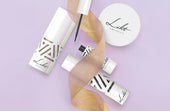
Liht Organics Black Friday: Enhance Your Beauty Routine with Vegan, Organic, and Natural Essentials!
As the holiday season approaches, there’s a sparkle in the air, and we at Liht Organics are thrilled to add a touch o...
-

Organic Makeup That Heals As It Conceals
Liht Organics Empowers Women With Only The Best For Their Beauty NeedsLiht Organics combines the best of both worlds:...
-
![[FEATURE] Liht Organics to debut at TFWA Asia Pacific show](//lihtorganics.com/cdn/shop/articles/1_1.png?v=1759328400&width=170)
[FEATURE] Liht Organics to debut at TFWA Asia Pacific show
‘Organic makeup that’s safe enough to eat’ — Liht Organics to debut at TFWA Asia Pacific show by Hannah Tan | 24 Apri...
-
![[FEATURE] The Singapore-based organic makeup brand is a first-time exhibitor at this year’s TFWA Asia Pacific Exhibition in Singapore in May 2025](//lihtorganics.com/cdn/shop/articles/2_1.png?v=1759328386&width=170)
[FEATURE] The Singapore-based organic makeup brand is a first-time exhibitor at this year’s TFWA Asia Pacific Exhibition in Singapore in May 2025
TFWA Asia Pacific preview: Liht Organics targets expansion in travel retail By DFNI Staff Writer The Singapore-bas...
-
![[FEATURE] Travel Retail Awards 2025 finalists - Best Make-up Product Color-Intense Liquid Lipstick – Liht Organics](//lihtorganics.com/cdn/shop/articles/4_e2f54f0f-fcd1-46e7-9990-fc9d29e35131.png?v=1759328382&width=170)
[FEATURE] Travel Retail Awards 2025 finalists - Best Make-up Product Color-Intense Liquid Lipstick – Liht Organics
Revealed: Travel Retail Awards 2025 finalists By Trbusiness Editor | Wednesday, 23 July 2025 15:21 TRBusiness is th...
-
![[FEATURE] Liht Organics targets expansion in travel retail](//lihtorganics.com/cdn/shop/articles/3_1.png?v=1759328346&width=170)
[FEATURE] Liht Organics targets expansion in travel retail
Organic makeup that’s safe enough to eat: Liht Organics targets expansion in travel retail By Laura Shirk Liht Organ...
-

[FEATURE] Gulf News: TikTok’s strawberry girl makeup trend: How to achieve that rosy glow inspired by Hailey Bieber
Berry, berry, strawberry, love strawberry, like BTS’s J-Hope, the band’s strawberry enthusiast once said. If only we ...
-

[FEATURE] Gulf Business Magazine : Liht-ing it up
Our founder, Nerissa Low was interviewed by Gulf Business, where she discussed her experience launching Liht, an orga...
-

[FEATURE] Daily Vanity: 11 local beauty brands owned by women – you’d be surprised how many of them started in their kitchens!
When we give a shout-out to homegrown beauty businesses, we aren’t just doing it for the sake of supporting local. Th...
-

[FEATURE] Entrepreneur ME : UAE-Based Liht Organics' Nerissa Low On Crafting An Organic Makeup Brand For The Skin-Conscious Consumer
As is the case with the origin stories of so many startups out there, Liht Organics came into being after its founder...
-
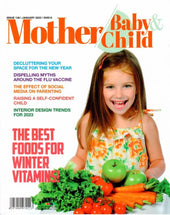
Mother, Baby & Child Editor’s Pick: Liht Organics Lights the Way
Excited to be the Mother, Baby & Child’s ‘Editors pick’ for their choice of Beauty brand.The article outlined the...
-
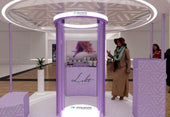
[FEATURE] EmiratesWoman - 8 Fabulous things to do in Dubai this weekend
by SARAH JOSEPHJANUARY 20, 2023Try the UAE’s first virtual reality makeup podium The popular VR-backed makeup exper...
-

Nerissa Low of Liht Organics On The Self-Care Routines & Practices Of Busy Entrepreneurs and Business Leaders
By Maria Angelova, CEO of Rebellious Intl.Date: 4 January, 2023Nerissa Low of Liht Organics On The Self-Care Routines...
-

Liht Organics: Meet the beauty brand that has caught the eye of the Royal Family of Bahrain
By Crystal Lee Digital Editor28 May 2021The world of clean beauty is, ironically, rather murky.That’s because the ter...
-

The latest luxury makeup and skincare drops, including serums, concealers, moisturisers and more
Allisa Noraini21 May, 2021It’s fine to splurge in the name of beauty. This new range of makeup and skincare drops are...
-

These SG Beauty Bosses Are Conquering The World Despite The Pandemic
First Singapore, then the US, China, Germany, Dubai, UK, South Korea, Malaysia, Hong Kong, Thailand, Australia… By...
-

Nerissa Low, Founder at Liht Organics
Written by Callum LaingPosted on December 26, 2020 10 min readNerissa Created Organic Makeup That Actually Improve...
-

Liht Organics – Makeup That Makes You
At Liht Organics, our mission is simple – to provide women (and men) with a safe experience when it comes to beauty s...
-

Why Should We Use Organic Makeup?
We cannot deny that cosmetics is one of our beauty essential item – it enhances our looks and conceals our flaws. Man...
-

Organic makeup and why your skin will love it: Liht Organics founder
By Jolene,July 27, 2020 |7 mins readOrganic make up in Singapore is a trend that is fast-catching on here as we becom...
-

[FEATURE] DC EDIT – Makeup & Confidence: Talking Self-love With Liht Organics’ Founder Nerissa Low
Makeup and confidence — the long, drawn-out fight that many of us have grappled with personally. I’m sure I’m not the...
-

[FEATURE] THE FEMALE CULTURE – I TRIED LIHT ORGANICS AND THIS IS HOW IT WENT
I’m a huge fan of makeup and I love testing out new products so I was pretty excited to get my hands on Liht Organics...
-

[FEATURE] SINGAPORE MOTHERHOOD – The Best Organic and Natural Skincare and Makeup for Pregnant and Breastfeeding Mums in Singapore
Pregnancy is a hormone-volatile period for women. One place where this makes itself seen and felt is on the skin. Som...
-

[FEATURE] AFTER CLINIC HOURS – 21 Back to Beauty Deals in Singapore (2020)
With spas and salons shuttered island wide for two months, I never thought I’d be this desperate for a good old’ Swed...
-

[FEATURE] KUL AL USRA MAGAZINE JUNE 2020
Choosing Pinks & Oranges this summer!Featured: Moisture Burst Lip Glaze in Pink Cupcake.
-
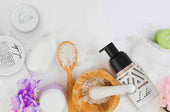
[FEATURE] Award-winning Organic Makeup Brand Liht Organics Gives Back to the Community & Environment During COVID-19
Singapore’s First Organic Makeup Brand with 100% Natural Makeup That Is Safe Enough to Eat Liht Organics promises org...
-

[FEATURE] COSMETICS DESIGN ASIA – COVID-19 ‘WAKE-UP CALL’: SINGAPORE’S LIHT ORGANICS SEES GLOBAL POTENTIAL AMID CLEAN BEAUTY CLAMOUR
Original article at: https://www.cosmeticsdesign-asia.com/Article/2020/06/26/Singapore-s-Liht-Organics-sees-globa...
-

[FEATURE] THE LIFESTYLE COLLECTIVE – BEAUTY SHOULD NEVER BE CRUEL
Date: June 24, 2020Author: Kristen Chen Liht (pronounced as light) Organics is a Singaporean organic makeup brand t...
-

[FEATURE] NÜYOU – 7 ONLINE PLATFORMS TO SHOP FOR CLEAN BEAUTY PRODUCTS
纯净美容(Clean Beauty)的美肤概念,再近几年来越来越受欢迎。随着消费者“爱自己”的美容意识逐步提升,对于用在脸上的所有物品、成分更为关注和讲究。以广义来讲,纯净美容主张使用“干净”成分和无毒配方,让肌肤的可能性损伤减到最小...
-

[FEATURE] COSMOPOLITAN MIDDLE EAST – 3 BENEFITS OF SWITCHING TO ORGANIC BEAUTY PRODUCTS THIS RAMADAN
By Cosmo – May 08, 2020Nerissa Low, founder of Liht Organics, shares the ultimate benefits of going organic this mont...
-

Nerissa Low of Liht Organics: “Seeing Light at the End of the Tunnel; 5 Reasons To Be Hopeful During this Corona Crisis”
Ely Weinschneider, Psy.D.May 8 · 9 min read …It shows us that everyone- whether we are rich or poor, regardless...
-

[FEATURE] AL MARA MAGAZINE APRIL 2020
-

[FEATURE] RetailME April 2020 – Liht Organics Stays Firm On Strengthening GCC Presence
-

[FEATURE] EMARAT AL YOUM NEWSPAPER – 27 MARCH 2020
English Translation:In spring and summer days, women love to have very light makeup in terms of color and texture, ...
-

[ARTICLE] WKND Magazine March 2020 – Know Your Organic Makeup
-

[FEATURE] AVIAMOST DUBAI – March/April 2020
English Translation:Lipstick with organic flowers. Thanks to the rich complex of natural ingredients, the lipstick...
-

[FEATURE] RUSSIAN EMIRATES (MAR/APR ISSUE)
Russian Emirates is a luxury lifestyle and fashion magazine covering information about the UAE, fashion, beauty, j...
-

[FEATURE] – KUL AL USRA MAGAZINE MARCH 2020
GET THE LOOK!
-

[FEATURE] IMAGES Retail ME – Liht Organics Announces GCC-Wide Expansion
Rupkatha Bhowmick Mar 10, 2020 The plan is to reach 75 Liht Organics retail touchpoints by June-July 2020 and touch...
-

[FEATURE] BABY & CHILD SPRING 2020 – NATURAL BEAUTIES
-

[FEATURE] AWQAT DUBAI – Liht Organics: The First Premium Organic Makeup Brand
ENGLISH TRANSLATION:Liht Organics – The First Premium Organic Makeup Brand Liht Organics, a premium organic beauty ...
-

[FEATURE] FRIDAY MAGAZINE – THE RETRO EYELINER LOOK
-

[FEATURE] MOTHER BABY & CHILD – VANITY ESSENTIALS – THE BEAUTY EDIT
-

[FEATURE] Masala! Magazine February/March 2020 Issue – Beauty Debut: Liht Organics
-

[Feature] – TimeOut Singapore – The Best Local Beauty and Skincare Brands In Singapore
For full article, click here.
-

[FEATURE] KUL AL USRA MAGAZINE – LIHT UP YOUR WORLD WITH LIHT ORGANICS
[ENGLISH TRANSLATION]Liht Up Your World With Liht OrganicsThe First Premium Organic Makeup Brand To Debut In The Mi...
-

[FEATURE] SINGAPORE TATLER – 9 Local Beauty Brands You Should Know Of
-

[FEATURE] nüyou August 2019 Issue – 15 Faces To Watch
-

[FEATURE] HONEYCOMBERS – Local Beauty Gurus: Singapore Beauty Brands You Need To Know About
-

[FEATURE] The Wellness Insider – Seeing The Liht With Founder Nerissa Low
-

[FEATURE] 联合早报 (LianHeZaoBao) – Women Entrepreneur Awards 2019 Coverage
-

[FEATURE] THE STRAITS TIMES Life – Clean beauty with a Singapore heart
-

Romantic Organic Makeup Looks for Valentine's Day: Tips, Tricks, and Product Picks
Valentine's Day is the perfect occasion to embrace the beauty of organic makeup. At Liht Organics, we believe in the ...
-
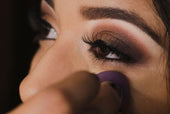
Enhance Your Eyes: A Guide to Eyeliner for Every Eye Shape with Liht Organics
Welcome to the Liht Organics blog, where we believe in celebrating the natural beauty of every eye shape. Today, we'r...
-
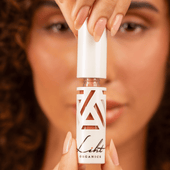
How to do makeup with only lipstick?
At Liht Organics, we believe in the power of clean beauty and the artistry of makeup. Makeup is more than just enhanc...
-

How to Clean Your Makeup Brushes in 6 Simple Steps
Cleaning your makeup brushes may seem like a tedious task, but it's an essential part of your beauty routine. Not onl...
-

Makeup Tips to Help You Look Your Most Flattering on Virtual Meetings!
After more than 2 years of work-from-home arrangement, and possibly hundreds of zoom calls and Google meet virtual me...
-
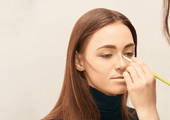
Learn How to Contour with This Simple Guide for Beginners
Want to take your makeup to the next level? Try contouring to achieve a more defined or sculpted look à la the Kardas...
-
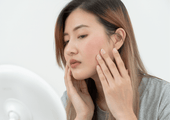
Essential and Easy Makeup Tips for Sensitive Skin
Living with sensitive skin conditions like eczema, psoriasis, and more is already not an easy feat. Throw in makeup t...
-

Raising Your Vibration: A Liht Organics Guide for Empowerment This International Women's Day
wp:paragraph As International Women's Day (IWD) approaches, it serves as a powerful reminder of the journey towards s...
-

The Beauty of Going Bare: Why Sleeping with Makeup is a No-No
Have you ever had one of those nights where you're too tired to clean off your makeup? You might believe, "Skipping...
-

Breast Cancer Awareness: Empower Your Beauty with Liht Organics Makeup
During October, we observe Breast Cancer Awareness Month as a way to unite and bring attention to breast cancer whil...
-

The Hidden Dangers of Carmine in Makeup Colorants: Embracing Healthier and Vegan Options
Makeup has become an integral part of our daily routines, allowing us to express our unique beauty. However, as we pr...
-

How can I ensure that my makeup products are organic and won't harm my skin?
When it comes to makeup, it’s important to be mindful of what you’re putting on your skin. With so many products on t...
-
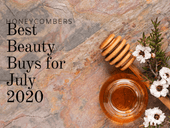
[FEATURE] HONEYCOMBERS – BEST BEAUTY BUYS IN JULY
by Nicole NithiyahWhat’s hot in our beauty hit list: Honest thoughts and top beauty stories we’re swooning over. As w...
-

Liht Organics Introduces Exclusive Gift Sets: Enhance Your Beauty This Festive Season!
As the holiday season approaches and the year draws to a close, Liht Organics is thrilled to present two enchanting g...
-

Get Spooktacular with the Best Halloween Makeup Ideas using Liht Organics' All-Natural, Vegan, and Cruelty-Free Cosmetics!
With Halloween just around the corner, it’s time to let your creativity shine and transform yourself into a spooky,...
-

Celebrating World Animal Day with Liht Organics: Embracing Natural Cruelty-Free Makeup
wp:paragraph As we observe World Animal Day, the team at Liht Organics takes great pride in honoring our pledge to...
-
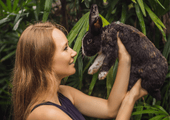
Reasons Why You Should Choose Cruelty-Free Cosmetics Instead!
With increasing exposés unveiling the ugly truth behind animal testing that goes on in the beauty industry, it is lit...
-

Celebrate Singles Day with Makeup That Empowers – 22% Off at LIHT Organics!
This Singles Day, treat yourself to beauty that goes beyond skin-deep. At LIHT Organics, we believe makeup is about s...
-

Preparing for the Cozy Beauty of Autumn: A Preview of Your Fall Look
As we bid farewell to the warm, sun-kissed days of summer, it’s never too early to start dreaming about the enchantin...
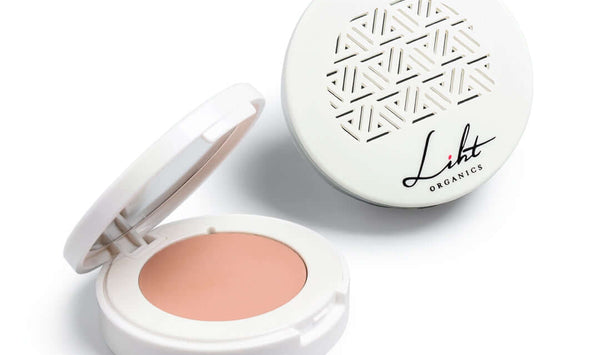
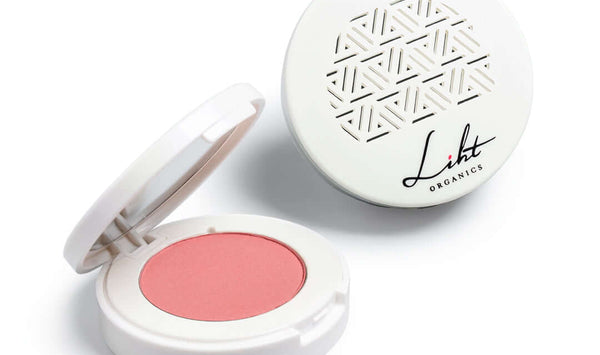
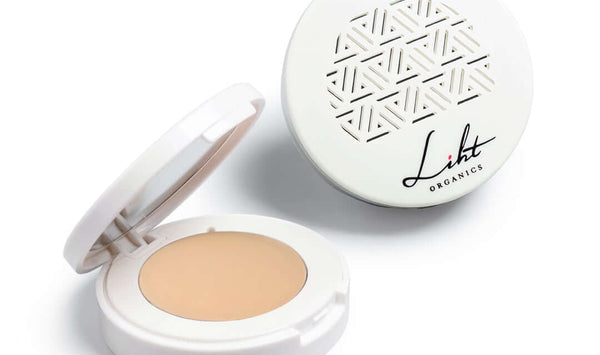
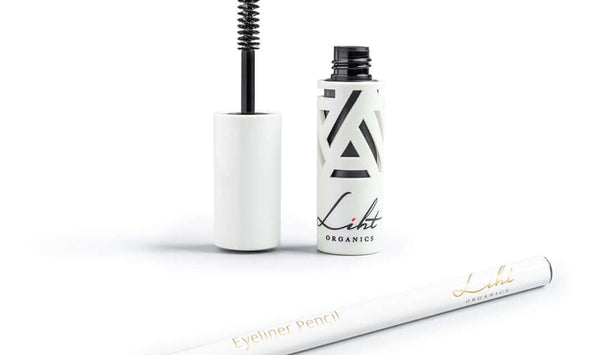
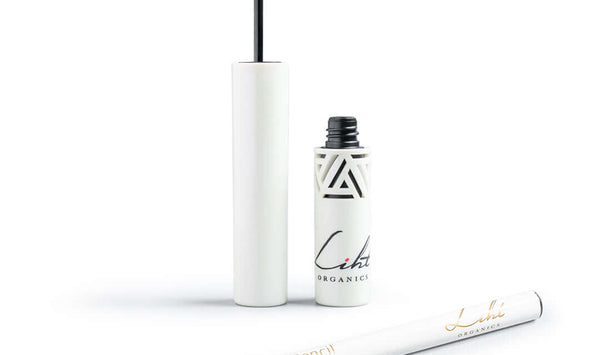
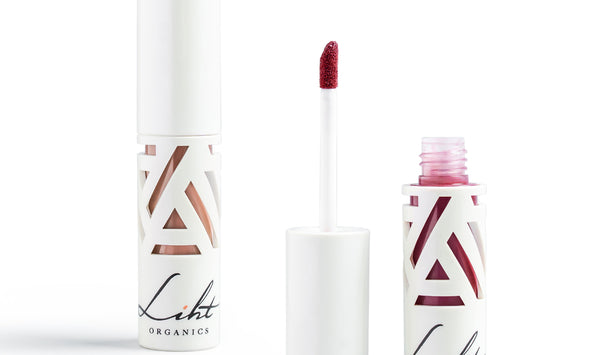
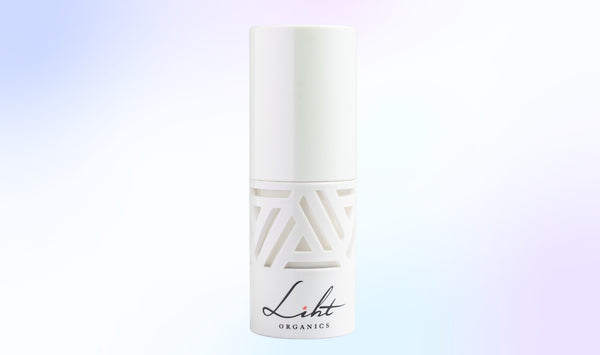
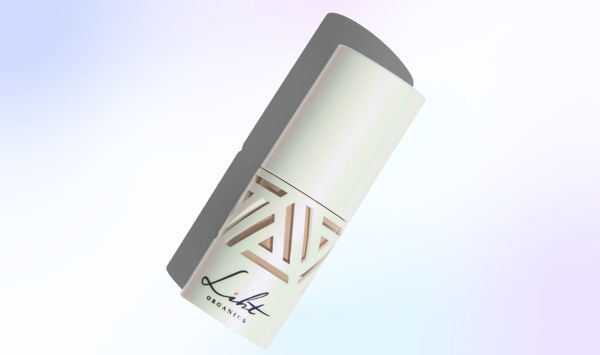
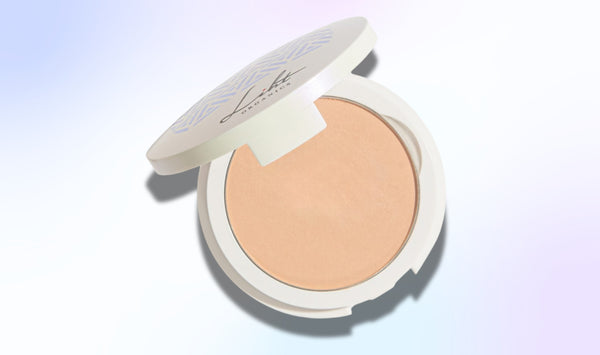
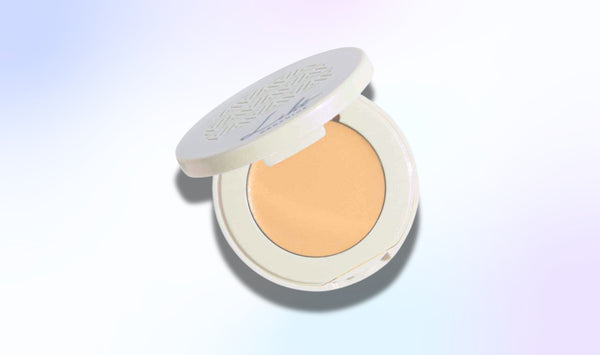
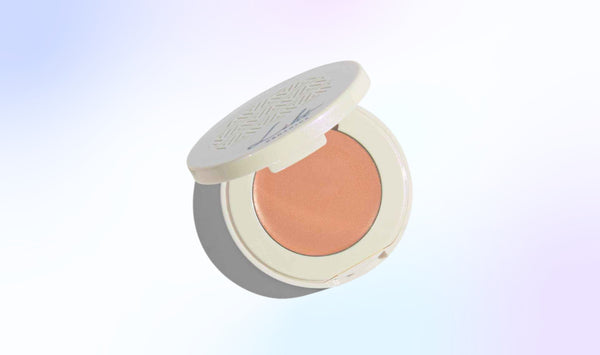
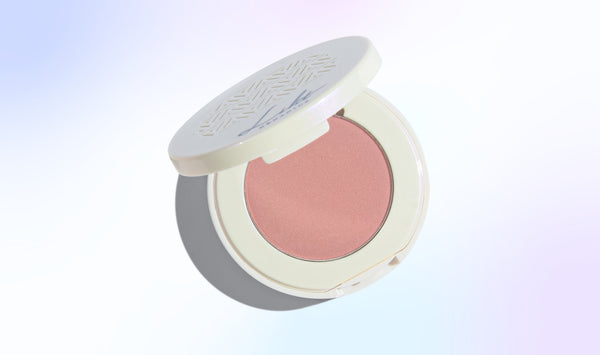
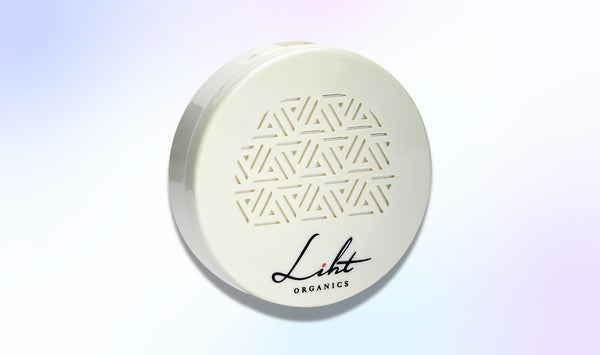
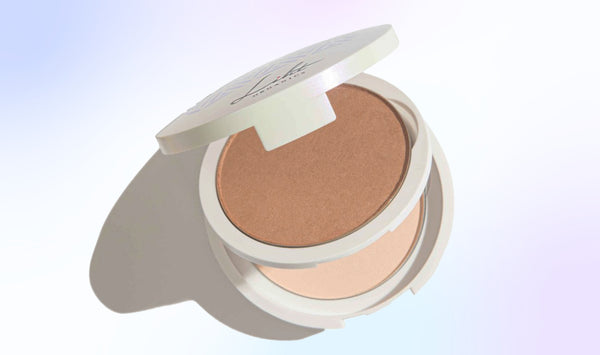
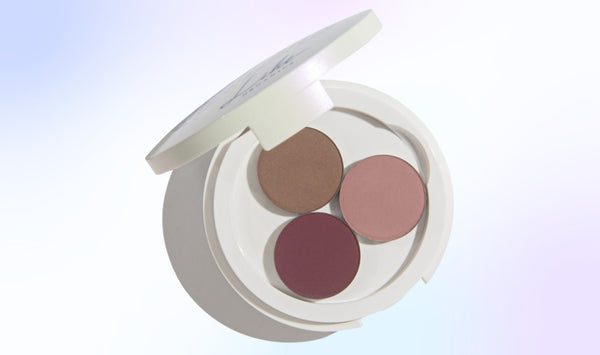
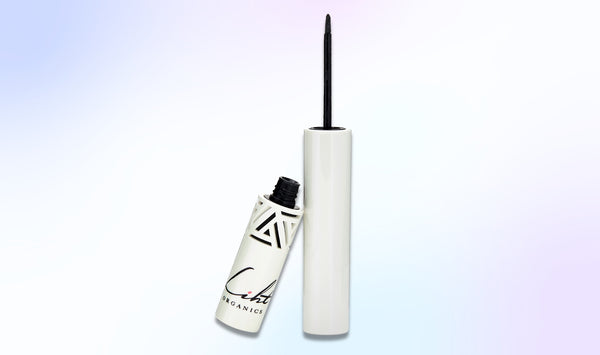
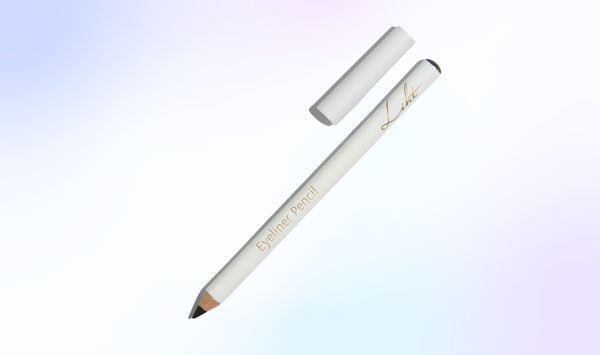
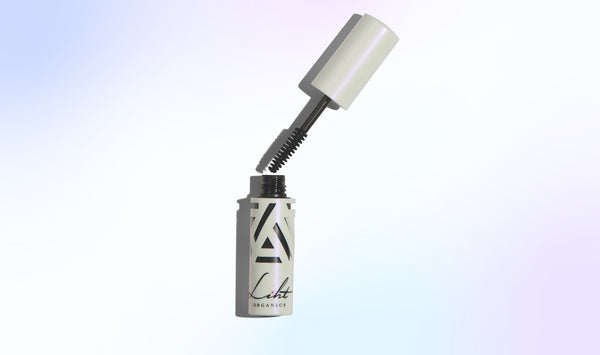
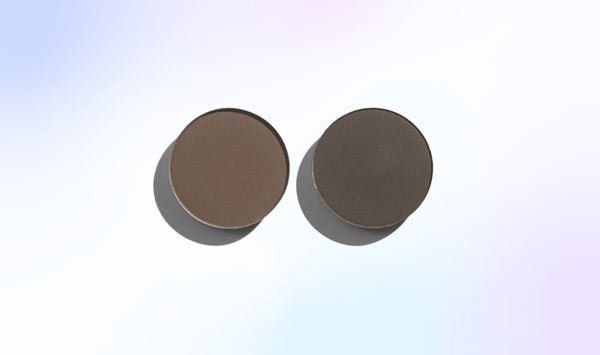
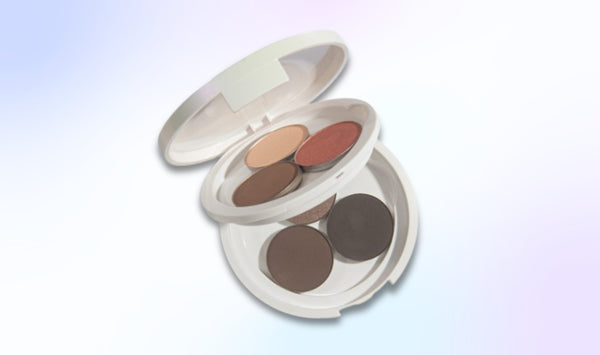
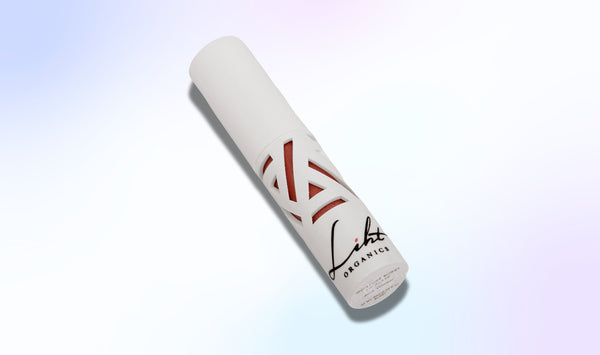
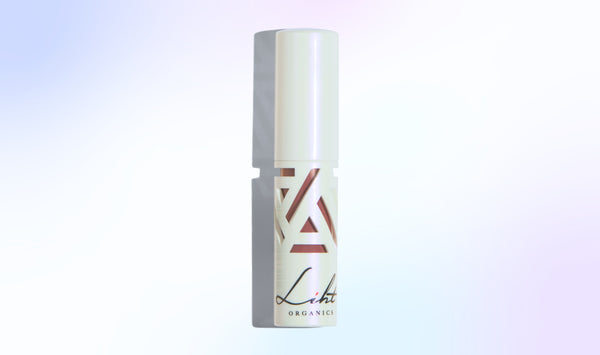
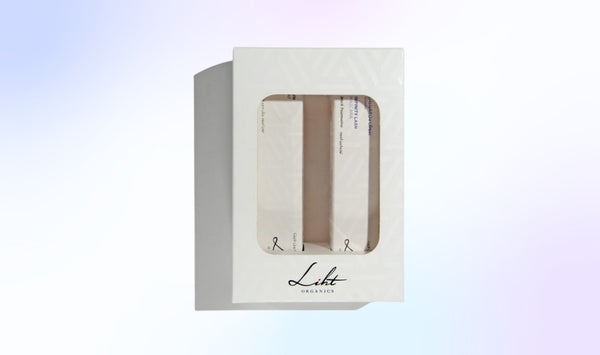
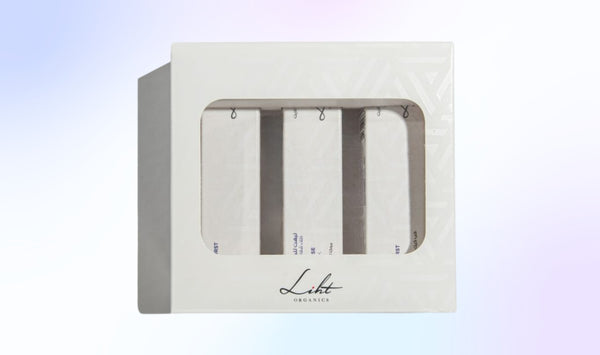
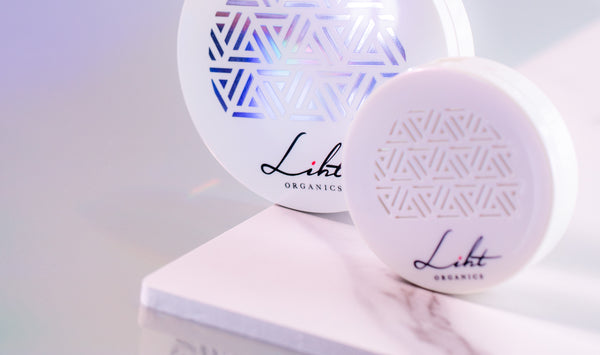
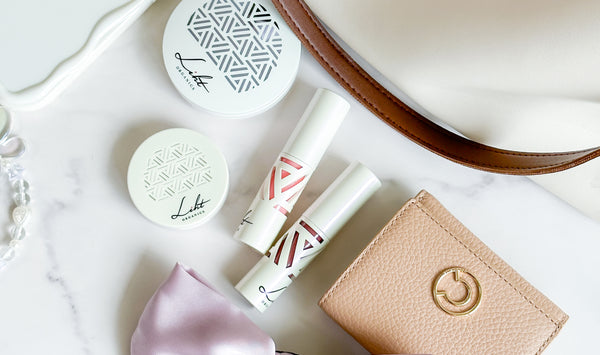
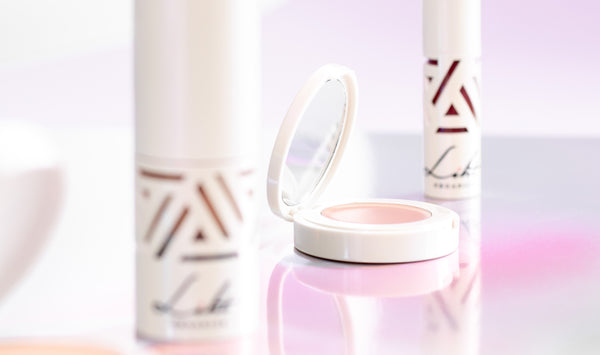




![[FEATURE] Liht Organics to debut at TFWA Asia Pacific show](http://lihtorganics.com/cdn/shop/articles/1_1.png?v=1759328400&width=170)
![[FEATURE] The Singapore-based organic makeup brand is a first-time exhibitor at this year’s TFWA Asia Pacific Exhibition in Singapore in May 2025](http://lihtorganics.com/cdn/shop/articles/2_1.png?v=1759328386&width=170)
![[FEATURE] Travel Retail Awards 2025 finalists - Best Make-up Product Color-Intense Liquid Lipstick – Liht Organics](http://lihtorganics.com/cdn/shop/articles/4_e2f54f0f-fcd1-46e7-9990-fc9d29e35131.png?v=1759328382&width=170)
![[FEATURE] Liht Organics targets expansion in travel retail](http://lihtorganics.com/cdn/shop/articles/3_1.png?v=1759328346&width=170)
































































